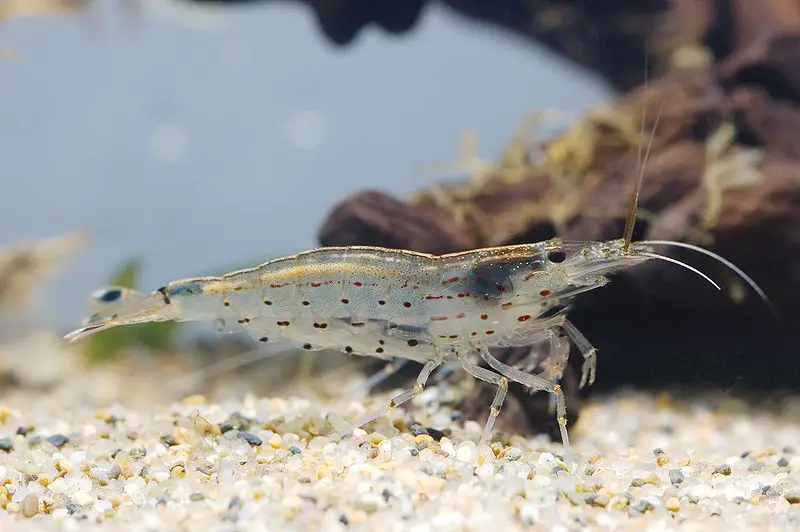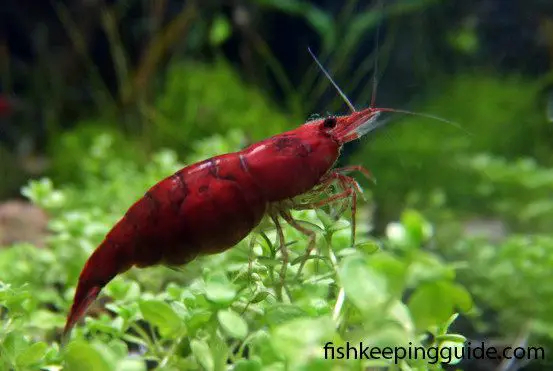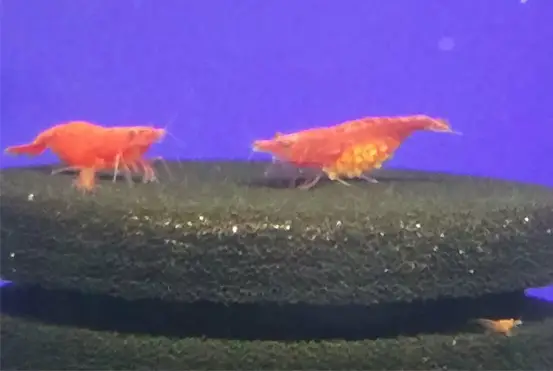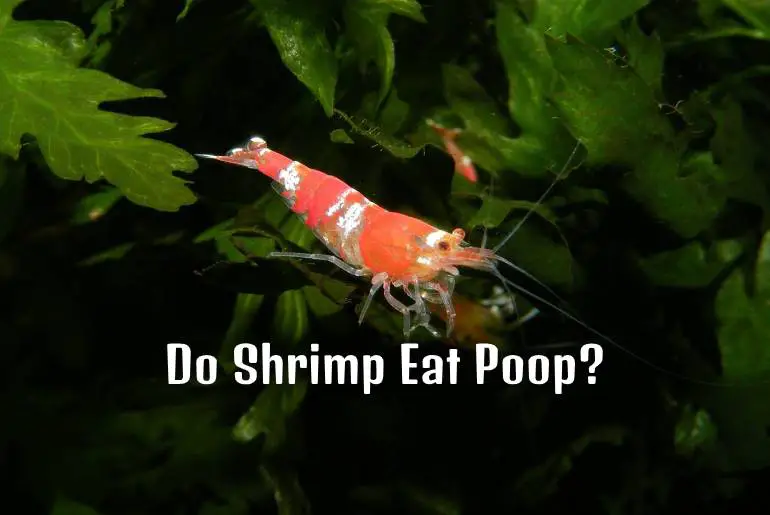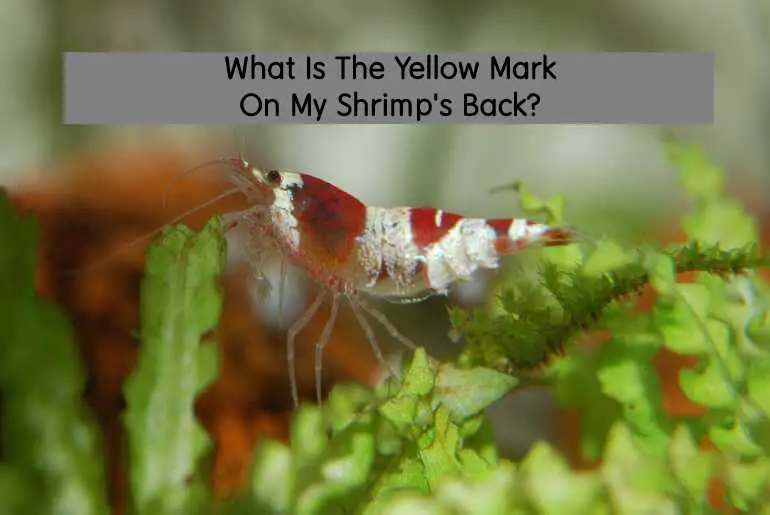Amano Shrimp is a famous freshwater aquarium shrimp available in many stores today. Amano Shrimp is also as called: Caridina Multidentata, Caridina japonica, Seaweed, Shrimp, Swamp Shrimp, Yamato Shrimp, Japonica Amano Shrimp, Yamato Numa Ebi, Japanese Marsh Shrimp, and Japanese Swamp Shrimp. A Camaro Amano can be described as a spirit of inhabitants of a tank. They are great swimmers, and they are always looking for food.
An Amano shrimp can be kept in tanks of almost any size, as long as the regular rules of the fish are followed. Keep in mind not to exceed. Caridina Multidentata produces waste and gravel an aquatic environment just like any other living organism in a tank. Amano Shrimp likes to be in a habitat with many live aquarium plants that provide interesting places to climb. They also seem to have a load of swimming from plant to plant in search of different places to explore, perch or hide.
Caridina Multidentata (Amano Shrimp) Requirements
Temperature ~ 75 ° F
The temperature ranges for Caridina Multidentata is nearby 80-90 ° higher temperatures will increase the movement as well as the metabolism of Amano Shrimp. This temperature can help in the decrease of algae.
pH ~ 7.2 | Hardness 8.0 dkh
Amano Shrimp needs pH at neutral levels between 6.6 and 7.6. This range will maximize the health as well as the metabolism of Caridina Multidentata. More plants in aquariums often have a pH slightly lower than 9.
The general hardness for Caridina Multidentata should be around ~ 7-8dkh. TDS should be at roughly 200 ppm.
Nitrite ~ 0 ppm
Amano shrimp are caught mainly in the wild and mishandles nitrite. Nitrite post cycling must always be at 0.
Ammonia ~ 0ppm
The Caridina Multidentata are caught in the wild and cannot handle any ammonia spikes. Ammonia should be at 0ppm.
Nitrate> 20 ppm
Nitrates should be as close to 0 ppm as possible. Adding plants to the aquarium and continuous water changes can help reduce them.
Water changes> 30%
The water should be changed at least twice a week for Amano Shrimp. De-chlorine is important because Caridina Multidentata caught in the wild are very sensitive to chemical additives.
Amano shrimp size
Caridina Multidentata belongs to the Decapoda order, like crabs and lobsters. The characteristic feature among them is that their ancestral parent had, at some point, ten pairs of legs.
When looking at a shrimp, it may seem evident that today they only have ten pairs, but the point still holds. They have just adapted and changed the shapes and roles of their legs so that the ten pairs are now divided between the pleopods, or the legs that walk, and the maxilliped, or the legs of the mouth. The swimming legs, the pleopods, in the back are a different matter and are not classified as legs in the same sense.
Amano Shrimp Color
An Amano Shrimp color is generally luminous light gray. It can also be translucent with shades of brown, light green or light reddish-brown. The Caridina Multidentata color features also include the many solid points and stripes that run the length of their bodies. These dots and stripes can be bluish-gray or reddish-brown.
Amano Shrimp also has a lighter narrow stripe on its upper part that runs the length of their bodies, as well as two large eyes, relatively long antennae, long and agile legs, and a broad and translucent tail. They will have a series of dots and stripes along with their bodies, which can be gray-blue or red-brown. In general, they will also have a clear band along their upper side that will run from their carapace down through the upper abdomen. They also have two large eyes and long antennae, their Uropod or “tail” is broad and always translucent.
Amano Shrimp lifespan
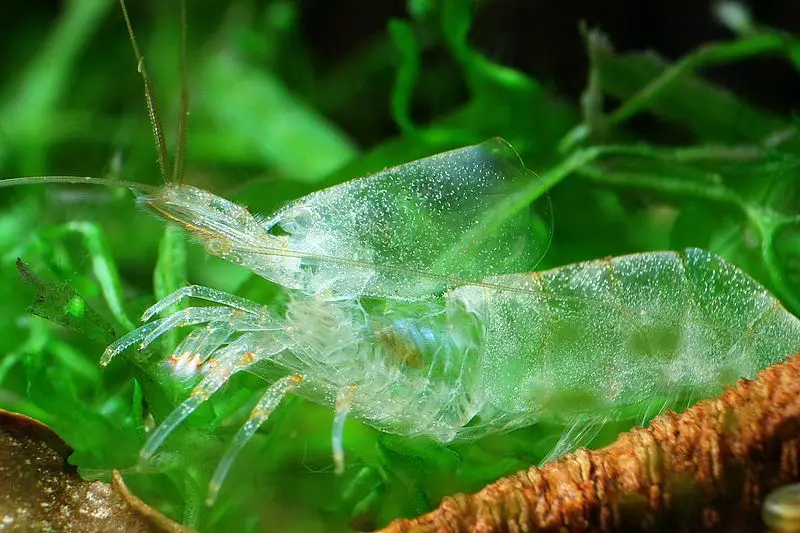
All crustaceans need to shed their shell to grow, and this stage is called molting. Shrimp molt more when they are younger and subsequently grow faster, although adults can move around on a monthly basis. Molting also helps to keep the skin healthy and free of pathogens.
With insufficient GH in the water, the molt is affected. Some caregivers shake swords about whether or not to leave the shell in the tank once the shrimp has fallen off.
In theory, the shrimp will ingest some of its shells and recover some of the valuable chitin it contains. However, in reality, if the diet is adequate and the GH levels are adequate, then this will be more than the requirements.
That said, there is no harm in leaving the carapace in the tank for grazing.
Amano Shrimp Diet
Fortunately, the feeding of Caridina Multidentata is relatively easy. Regularly known as algae that eat shrimp. They enjoy feeding on some forms of soft seaweed.
The Amano shrimp feed may include food sources that occur naturally in a planted tank. Live aquarium plants continuously produce good matter such as dead leaves, algae and so on. Caridina Multidentata will eat the dead vegetable matter that would otherwise accumulate in the background. So, we should not keep Amano shrimp in a too clean aquarium. Aquariums that are too clean may not have enough usual food sources to support the shrimp. The Caridina Multidentata diet may also include, shrimp pellets, fish pellets, fish flakes, seaweed wafers, raw green courgettes, and blanched spinach.
Amano Shrimp Tank Mates
Caridina Multidentata’s tank-mates should not include aggressive fish such as goldfish, cichlids or other roughens, or fish such as crayfish,
mandarin lobsters or Hammers blue cobalt lobsters. Care must be taken because Amano will be attacked and eaten.
Lastly, tank buddies Amano Shrimp can include others of their kind, as well as most of the inhabitants of small as well as medium-sized non-aggressive tanks in the community, including Otocinclus Catfish and Cory Catfish. Freshwater snails may include species such as Nerite Snails, Malaysian Trumpet Snails, Mysterious Snails, Golden Inca Snails, Ivory Snails and Ramshorn Snails. Other tankmates may include other freshwater shrimp such as bamboo shrimp, vampire shrimp, red cherry shrimp and phantom shrimp, as long as the hands are more extensive. As with other species, if you have any questions about compatibility, check with the store clerk before buying a shrimp.
The Amanos are generally friendly. Amano Shrimps dedicate themselves to their work searching the tank for natural food without incident. The Amanos seem quite a happy feeding alone or in groups of others of their type. However, if only a pellet is provided to the shrimp, a large,
dominant Amano will grab it and take it to a safe place to eat. The big shrimp will move their body in a way that scares the smaller Amanos, phantom shrimp and cherry shrimp. If a smaller Amano arrives at the pellet first, it will be better to eat fast. If a larger Amano appears, the food will be taken. In this line, large Whisker shrimp will often outperform even the largest Amano in regards to feeding priority. So there is a hierarchical order to feed supplements.
Breeding Caridina Multidentata
Amano Shrimp is surprisingly challenging to breed in captivity. Cherry Shrimp and Ghost Shrimp will reproduce naturally in the aquarium without the need for human intervention. Amano Shrimp, on the other hand, is complicated in the development stage of the young larvae past. Caridina Multidentata also requires brackish water for breeding. This guide goes into the details of breeding and the increasing chances of survival of the Amano shrimp hatchlings.
Naturally, it is tough to captive breeding of Amano shrimp. Caridina Multidentata is usually very much expensive than other fish. A very high percentage of Amano Shrimp are breed in the aquarium as a hobby. They have a useful life of 2-3 years in captivity. Care must be taken when introducing them into the aquarium. Caridina Multidentata is very sensitive to changes in water quality because they are caught in the wild and less tolerant of captivity.

